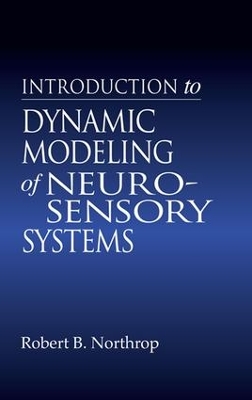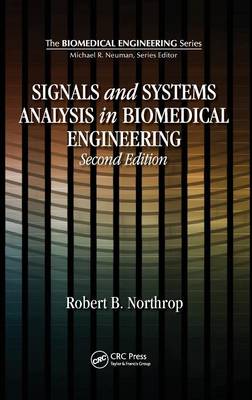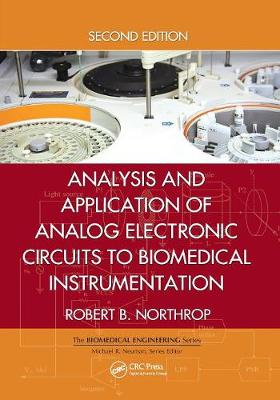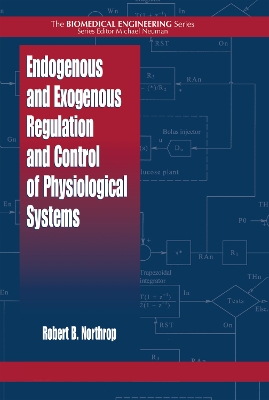Biomedical Engineering
4 total works
Introduction to Dynamic Modeling of Neuro-Sensory Systems
by Robert B. Northrop
Signals and Systems Analysis In Biomedical Engineering
by Robert B. Northrop
The first edition of this text, based on the author's 30 years of teaching and research on neurosensory systems, helped biomedical engineering students and professionals strengthen their skills in the common network of applied mathematics that ties together the diverse disciplines that comprise this field. Updated and revised to include new material as the field has grown, Signals and Systems Analysis in Biomedical Engineering, Second Edition continues to provide a ready source of information on those specialized mathematical techniques most useful in describing and analyzing biomedical signals.
New chapters on nonlinear and complex systems
Enriched with many examples that promote sound practical analysis, this volume covers classical linear systems theory and its applications to biomedicine. It examines the important use of joint time-frequency analysis to characterize non-stationary physiological signals, and explores the mathematics of tomographic imaging (the Radon transform, the Fourier slice theorem, and the filtered back-projection algorithm). It also describes the analytical signal and the Hilbert transform and some of its biomedical applications. New chapters in this edition include one on the analysis of nonlinear biochemical systems and biochemical oscillators, as well as one introducing complex systems and illustrating ways to best model them.
Four appendices with additional material
Extensive appendices supplement the text, including "Simnon (R) Programs Used in Chapters 11 and 12," "How to use Root Locus to Determine the Stability of SISO Linear Systems," "Signal Flow Graphs and Mason's Rule," and "Computational Tools for Biomedical Signal Processing and Systems Analysis." An extensive glossary is included as well as an ample listing of sources for further study.
A solutions manual is available for instructors wishing to convert this refrence to classroom use.
Analysis and Application of Analog Electronic Circuits to Biomedical Instrumentation
by Robert B. Northrop
Analysis and Application of Analog Electronic Circuits to Biomedical Instrumentation, Second Edition helps biomedical engineers understand the basic analog electronic circuits used for signal conditioning in biomedical instruments. It explains the function and design of signal conditioning systems using analog ICs—the circuits that enable ECG, EEG, EMG, ERG, tomographic images, biochemical spectrograms, and other crucial medical applications.
This book demonstrates how op amps are the keystone of modern analog signal conditioning system design and illustrates how they can be used to build instrumentation amplifiers, active filters, and many other biomedical instrumentation systems and subsystems. It introduces the mathematical tools used to describe noise and its propagation through linear systems, and it looks at how signal-to-noise ratios can be improved by signal averaging and linear filtering.
Features
- Analyzes the properties of photonic sensors and emitters and the circuits that power them
- Details the design of instrumentation amplifiers and medical isolation amplifiers
- Considers the modulation and demodulation of biomedical signals
- Examines analog power amplifiers, including power op amps and class D (switched) PAs
- Describes wireless patient monitoring, including Wi-Fi and Bluetooth communication protocols
- Explores RFID, GPS, and ultrasonic tags and the design of fractal antennas
- Addresses special analog electronic circuits and systems such as phase-sensitive rectifiers, phase detectors, and IC thermometers
By explaining the "building blocks" of biomedical systems, the author illustrates the importance of signal conditioning systems in the devices that gather and monitor patients’ critical medical information. Fully revised and updated, this second edition includes new chapters, a glossary, and end-of-chapter problems.
What’s New in This Edition
- Updated and revised material throughout the book
- A chapter on the applications, circuits, and characteristics of power amplifiers
- A chapter on wireless patient monitoring using UHF telemetry
- A chapter on RFID tags, GPS tags, and ultrasonic tags
- A glossary to help you decode the acronyms and terms used in biomedical electronics, physiology, and biochemistry
- New end-of-chapter problems and examples
Endogenous and Exogenous Regulation and Control of Physiological Systems
by Robert B. Northrop
From a biomedical engineering perspective, this book takes an analytic, quantitative approach to describing the basic components of physiological regulators and control systems (PRCs). In Endogenous and Exogenous Regulation and Control of Physiological Systems, the author provides grounding in the classical methods of designing linear and nonlinear systems. He also offers state-of-the-art material on the potential of PRCs to treat immune system ailments, most notably AIDS and cancer.
The book focuses on certain "wet" physiological regulators, such as those using endocrine hormones as parametric control substances. Endogenous and Exogenous Regulation and Control of Physiological Systems includes simulations that illustrate model validations and the putative control of cancer and HIV proliferation. It explores novel, untried immunotherapies on the cutting-edge of PRC treatment and explores the latest technologies.



